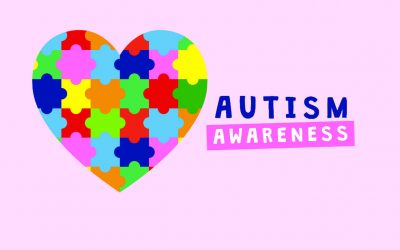Working With Perfectionist Anxiety
Many persons with autism will not attempt to do things unless they are certain that they know exactly what is expected, and that they can actually accomplish what is expected. They “lock in” on their “concrete” and “literal” interpretation of the “rules”, as they understand these. Once they know how to do something they want to do this “perfectly”.
One youngster could only do his schoolwork in pencil or on the computer. There was major conflict with the school and behavioral “melt down” when he was required to use pen. With pen he could not turn in “perfect” work. This boy had to be able to correct his “errors”. His parent insisted that the school accept pencil or provide him with access to computer to allow him to correct his work before turning this in. He was also given extra time to complete work to his own standard.
Perfectionism may affect a child with autism in another manner. It is so difficult for some to understand how the “rules of the world” work, that once they recognize what to do, they may feel that they have to do everything that they know how to do. They try to do it all.
One youngster is an excellent baseball player in many ways. He could catch, pitch and hit the ball hard. But when he was on the field he wanted to catch and field the ball and get the player out every time. When he couldn’t accomplish this he “melted down”. He was “failing” at the game of baseball. This was the end of his “competitive” ball career. He can still enjoy one-on-one catch and batting practice.
Some children with autism can become very depressed when they are unable to “win” in social situations.
One boy felt that he was playing life as a game and that the game was “rigged.” The game needs to be rigged in this boy’s favour. He needs to feel like those who are supporting him are in the game, on his side.
How to support a person displaying perfectionist anxiety: Give the “answer key to life”.
Try to remember your grade 9 algebra, or grade 11 physics. Remember where we were given a text with the correct answers in the answer key at the back of the book. Without the key we might not have even attempted to do the difficult problems.
With the answer key available we were confident that we would be able to correct our work if we made any simple mistakes, we were not anxious that we would look stupid, and we were certain that we would be able to get credit for our effort. These are pretty motivating circumstances that allow one to gear up, to put out the effort to do the difficult, new problems.
Having the answers available did not make us too dependent, not even if we looked at the answer first to get an idea about how we might do the problem. We still had to show our work. Having the “answer key” served to clarify the end goal and allowed us to organize our effort. Having the answer key made us more efficient. (Did you ever have the experience of working all night on a problem and tearing out your hair because you couldn’t get the same answer? Then the next day the teacher told you that the book had the wrong answer?)
Apply the metaphor to your child:
Metaphorically, think of a successful life for these “perfectionist” children with autism as being like an “open book, multiple-choice test”. The secret is for caregiver to give the child exposure to the “answer key” before you challenge him to take the “test.” Model the required actions. Demonstrate yourself or to another before requesting the child’s participation.
Metaphorically, caregiver should also open the book to the correct page and highlight the sentence where the child will find the correct answer. Give positive feedback to others for doing the correct actions. Then all your child has to do is to recognize that he already knows what to do to be correct, and may be willing to attempt action.
Many children who live with autism are great at remembering what they have memorized. Try to make life into a series of pre-organized “tests”. Give them the “answer key” and make life into an “open book” test.
Application one: Solving social problems that are too full of conflict and ambiguous meanings.
Write out every rule and every interaction. Have the child “study” this in the form of social stories and scripts. These “work” for many children and adults. Pre-rehearse the life script for successful interaction before each interaction. Make sure the child has rehearsed and can “pass” the test. Only then, engage the child in a manner that will allow him/her to call on his/her memorized, rehearsed, and externally generalized role to the immediate situation.
For some children it may help to put each step of each interaction onto a 3×5 index card to assist them to memorize the sequence and get it into concrete format. Many of our children are very “smart”; they may be unable to figure out how to apply what they know. Solve these problems for them. Make life “goof proof.” Where they are vulnerable to their own perfectionism, protect them by using these structured procedures so that they will be confident that they know what is expected of them.
Application two: What to do when a person who is a perfectionist “freezes” and is unable to apply himself or herself. How to get them “unstuck”.
If the child does display autistic rituals, I recommend offering the child a suggestion to do something from their own ritualistic and sensory repertoire. They may be so ritualized that, if prompted with one of their own rituals, they may be likely to fall back into one of these. If they do so, they become “unfrozen.” Using their own ritual may allow them a successful, “perfect” way to escape from their own momentary anxiety.
Many children do this automatically. The goal here is to use their own ritual to cause a child who might otherwise “melt down” to become “successfully dependent” on their caregiver to show them a familiar “way out”.
Nathan E. Ory, M.A.
Registered Psychologist
Challenging Behavior Analysis and Consultation
Copyright 2001
challengingbehavior@shaw.ca


